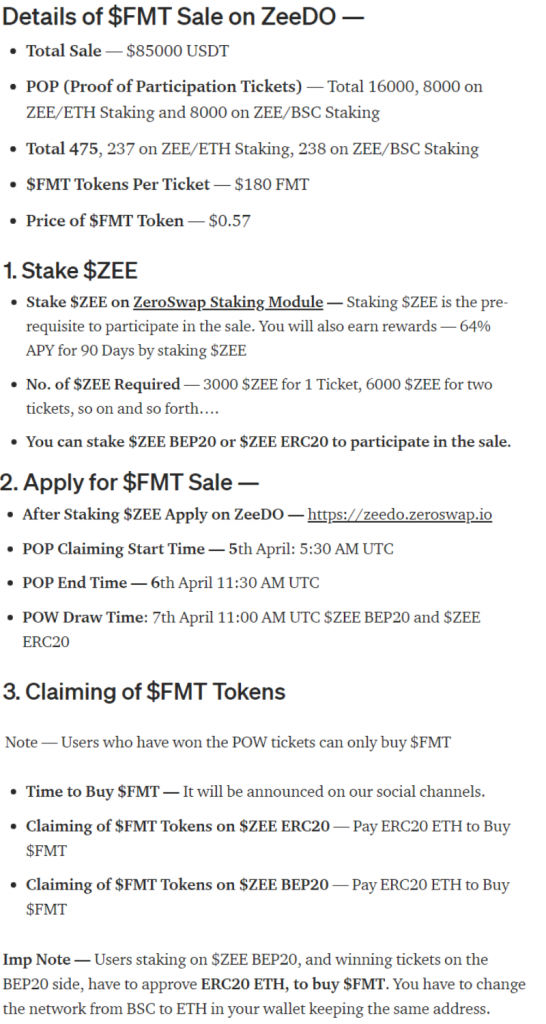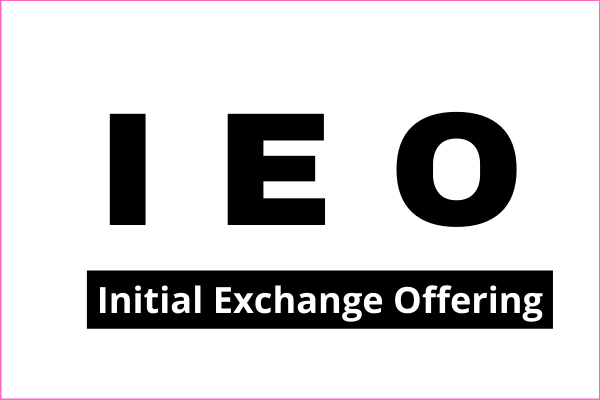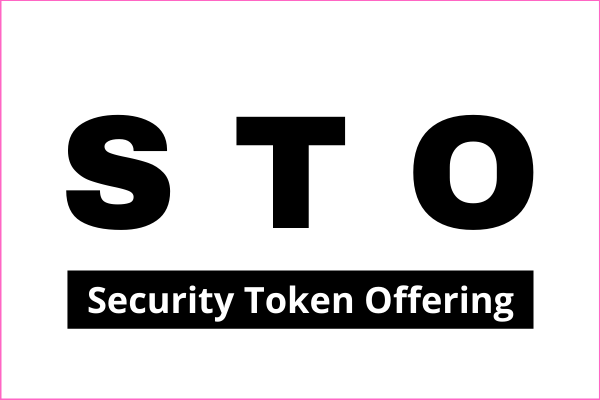This post is all about Initial Dex Offerings (IDOs), the latest crypto fundraising model.
You must have noticed that crypto projects like to have a graceful entrance (LOL).
Just like its predecessors (ICO, IEO, STO), an IDO is another medium for launching new crypto projects.
It became popular with the advancement of DeFi and NFT platforms because it suits their decentralized nature.
As you read on, you will learn how IDOs work and how they differ from the other models.
Let’s roll!
Post Summary
- What Are IDOs?
- How IDOs Work
- Platforms That Support IDOs
- How To Participate In An IDO
- How IDOs Are Different From ICO, IEO, And STO
- FAQs
- Conclusion
A click on any item above will reveal its details immediately.
Enjoy your read!
1. What Are IDOs?

Initial Dex Offerings a.k.a IDOs refers to launching a new project via a Decentralized Exchange (DEX).
Think of it as a business startup that seeks venture capital before going live.
An IDO is a means for new crypto projects to receive financing from individual investors.
Additionally, it is a way of introducing the project to the community that needs it.
This project could be a coin, token, NFT, etc.
Here, the DEX manages the fundraising event on behalf of the project issuers.
IDOs happen in the exchange’s launchpad platform.
Projects that issue IDOs enjoy immediate liquidity and trading.
How?
The new token gains liquidity from the pool where it is listed.
Also, traders swap the tokens in the pool to get the new listing at a low price and sell at a higher price later.
Furthermore, IDOs offers an added advantage of low cost.
All that is required is a few dollars of gas fee for deploying a smart contract.
No need to pay the exchange huge sums to have the token listed.
Additionally, the nature of IDOs enables anyone to participate.
This is good for the token’s price as no private investor will just dump his tokens in the market when he feels like it.
I described how IDOs work in the next section.
Keep reading!
2. How IDOs Work
Conducting an IDO requires 2 major steps:
a. Creation of token and tokenomics
The first step is to create a token.
This covers the blockchain that will host the token as well as the whitepaper that explains the vision and roadmap of the project.
Also, you want to define the tokenomics of your coin – how it will be distributed, the strategy it will use to scale like burning or inflation, and so on.
Investors want to know the long-term sustainability and market stability of your project.
b. Launch your IDO
After your token has been created, the next step is to launch the IDO.
You’ll need to:
- Choose a DEX that supports IDOs
- Create a liquidity pool for your coin
- Organize campaigns to attract investors
- List your coin on proposed exchanges and reward investors with tokens
Note:
You should run the campaign on platforms where your target audience engages e.g. Telegram, Reddit, Twitter, Discord, etc.
The campaign should include information on the duration of the IDO and the currency the coin will be traded for.
Once your IDO is complete, what’s left is for you to try your best to meet the goals of the project as and when due.
This will strengthen the trust of your new community in the project.
In Summary
Create your token and request for an IDO on your preferred DEX.
If you meet their standard, they’ll launch your IDO, collect funds for you, list your token, and reward investors’ wallets as required.
Cool, right?
Moving on, I’ll show you the platforms that support IDOs.
Tag along!
3. Platforms That Support IDOs
The DEX type that supports Initial Dex Offering is the one that provides immediate liquidity i.e. the Automated Market Models.
In the table below, you’ll find a list of DEXs and some of the IDOs they have supported before.
| DEX | IDOs |
| Binance DEX | RAVEN |
| Polkastarter | Shyft and 13 others |
| Sushiswap | Attrace, IBY, etc. |
| Zeroswap | RAGE, FMT |
| Uniswap | UMA protocol |
| Bakeryswap | TOKAU, Crypto Doggy, Rare Car Collection, etc. |
| Trustswap | MOAR, Carbon, Verso, etc. |
| DuckDAO | Fyooz, Bondly, and Base Protocol |
| Paid | Liquidifty, Octopus, Plutos, etc. |
| PancakeSwap | ADX, BSCPAD, RABBIT,WEX, etc. |
| JulSwap | QDX, AFEN, CryptoTycoon |
| BSCPad | Cook.Finance |
Next, I’ll show you how to participate in an IDO.
Keep Reading!
4. How To Participate In An IDO
Earlier, we talked about how you can create a token and launch an IDO.
Perhaps, you are not interested in starting a new project, you just want to invest in something that is already working.
Then follow these steps to participate in an IDO:
i. Look out for IDO campaigns.
ii. Install a web-based wallet like MetaMask and fund it with ETH and BNB.
iii. Visit the exchange where the IDO will happen and stake its native tokens.
That way, your wallet address will be whitelisted for the IDO.
Alternatively, you can provide liquidity for the pool having the native token paired with either BNB or ETH
*Whitelisting means that you’re qualified to participate in the IDO
iv. Next, you go to the launchpad of the exchange and apply for tickets
Because you have been whitelisted, you’ll be given tickets based on the amount of native tokens or LP tokens in your wallet.
Also, the number of tickets you possess will determine whether you will get the new offering or not.
The more tickets you have, the greater your chance.
v. Lastly, wait for the announcement to claim new tokens and follow the given instructions to get yours.
The tokens are distributed randomly to qualified addresses.
Note: The steps above may vary for different platforms but generally, it is a combination of pre-buying launchpad tokens and luck in the coin’s distribution.
For a clearer picture, look at the steps that were required to get FMT tokens on ZeeDO (Zeroswap’s launchpad):

In the next section, I compared IDOs to similar models.
Check it out!
5. How IDOs Are Different From ICO, IEO, And STO
To explain how these models differ from each other, I’ll first define them and then list their pros and cons.
ICO

ICO stands for Initial Coin Offering.
It is the launching of a new project (coin) on its website to raise funds.
Pros of ICO
- Easy to set up and at low cost
- No regulations
- Funds are raised within a short time
- Varieties of fundraising options like bounty programs, private/public sales, and AirDrops.
Cons of ICO
- Susceptible to scam
- Not suitable for long-term investment
IEO

IEO stands for Initial Exchange Offering.
This is a little upgrade on ICO, where the project owners leverage the integrity of a cryptocurrency exchange to raise funds.
Instead of hosting the ICO on the coin’s website, they do it on an exchange that people already trust.
In other words, they sell their tokens on the exchange to individual participants.
Pros of IEO
- High security for investors
- Investors participate directly in the exchange
- Participants contribute via their accounts (not to a strange wallet address)
- Immediate trading
Cons of IEO
- Costly and difficult to set up
- Raising funds may take a while
- Exchange controls fundraising activities
STO

STO stands for Security Token Offering
It involves issuing an investment contract that is backed by security tokens.
The contract is recorded on a blockchain platform.
Security tokens are digital, liquid contracts for fractions of any asset that already has value, like real estate, a car, or corporate stock.
https://www.investopedia.com/tech/2018-year-security-token/
STOs give participants a chance to own real-world assets.
Pros of STO
- Deals with real-world assets
- Very secure
- Suitable for long-term investment
Cons of STO
- Costly and difficult to set up
- Highly regulated
- Raising funds takes time
IDO

IDO is a lot like IEO except that the exchange of interest here is a DEX.
Pros of IDO
- Low cost
- Immediate trading
- Quick liquidity from available pools
- Exchange does not control funding activities
Cons of IDO
- Coin’s price may change quickly
Which Is The Best Model?
The different models described above have their unique processes.
You will have to find the one that best suits your needs as an issuer or investor.
ICOs are the easiest to set up since you do not have to meet the regulations of any exchange.
However, it may not be easy to attract investors since a lot of ICO scams have been recorded in the past.
IEOs remove that care of scam but then there are the exchange regulations, KYC/AML rules to deal with.
Also, issuers will need to pay (mostly large sums) to list their offering, which they may be reluctant to.
IDOs appear to favor both investors and issuers but the absence of regulations poses the risk of scams.
Moreover, if you are looking for a long-term investment, STOs are the best option.
Whichever one you go for, remember to do proper research before investing your money.
Let’s answer some questions and then we can wrap up this post.
6. FAQs
You can subscribe to platforms that provide updates on IDOs like IcoDrops, CryptoCompare, CryptoRank, and CoinMarketCap
First, you want to read the whitepaper of the project and confirm that the coin has real-life use cases.
Also, study the team behind the project. Are they capable of reaching the goals they’ve set from the project?
If you can’t say for sure, it’s probably a red flag.
Get more tips from our post on DeFi scams.
Once a trader swaps the token, its price begins to move.
This becomes a problem when only a few traders buy many of the tokens when the price is still low.
They do this using different wallet addresses to buy more tokens than the issuers are willing to give one participant.
Eventually, latecomers buy the coin at a higher price (that’s if they’re still interested), leaving only the first few to make huge profits.
Sadly, there is no way to control this action since participants do not complete KYC.
Also, scammers may leverage the decentralized platform to launch fake tokens.
And investors seeking to get in on time will buy up the tokens.
In the end, they lose because the tokens are fake.
Like I said earlier, endeavor to do diligent research before investing in a new project.
Hey!
If you want to learn how to trade cryptocurrencies profitably, then enroll in our Crypto Trading Mastery Course by going to www.ctmastery.com.
You can also join our Telegram community at https://t.me/ctmastery
7. Conclusion
ICO, IEO, STO, IDO are different fundraising models in the crypto-verse.
IDO which is the latest has some added benefits like low cost and immediate liquidity.
However, I expect you to DYOR before participating in an IDO.
That said, we have come to the end of our discussion on IDOs. I hope it was worth your time.
Now, I’d love to hear your thoughts on this fundraising model.
Do you think KYC measures should be included to encourage fairness in the token distribution?
Have you participated in an IDO before? What was it like?
Let’s hear your thoughts in the comments section right now. Also, ask any questions you may have.
One more thing! Hit those SM icons to share this post with your friends, thank you!



0 Comments